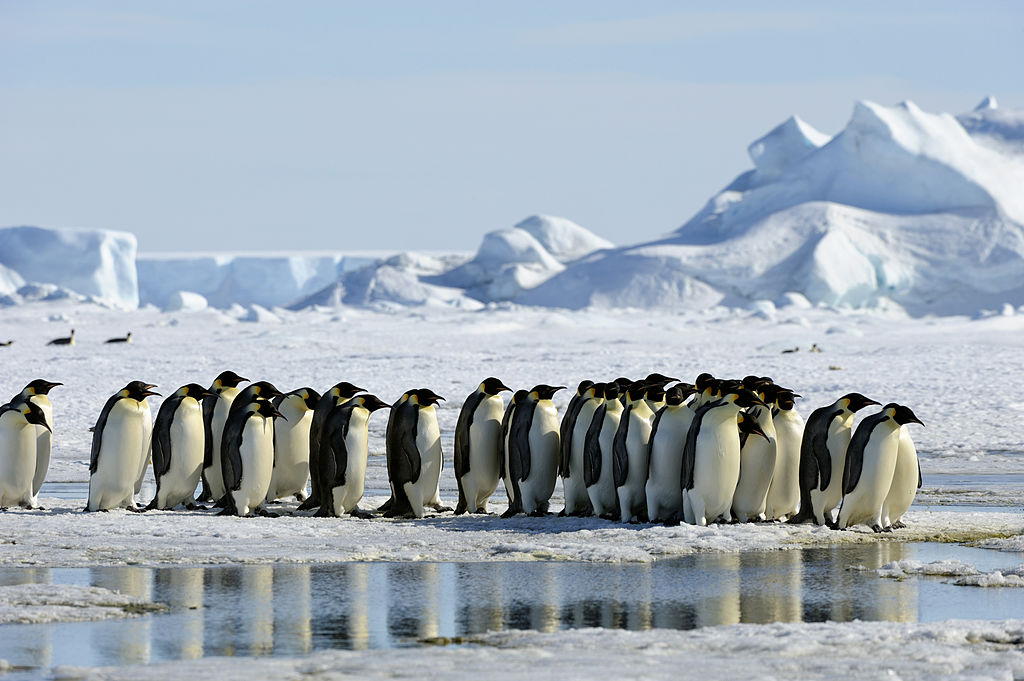
Twenty-six nations are meeting in Hobart, Australia, this week to decide the future of Antarctic seas. That is, if politics don’t get in the way. The meetings come against a backdrop of ongoing Russia-Ukraine tensions. Two weeks ago a Russian bomb decimated the offices of Ukraine’s National Antarctic Scientific Center in Kyiv. This undoubtedly will set the tone for a series of tension-filled meetings, which, once concluded on Nov. 4 will see Ukraine replace Sweden as the rotating chair for two years. But it’s not as if nations have never been able to put politics aside in the name of conservation.
Back in 1959, at the height of the Cold War, the world set Antarctica aside as a zone for peace and scientific cooperation. That meant no mining, harvesting, or hunting anywhere on the continent. But the Antarctic Treaty didn’t extend to the waters lapping at its edge, despite the fact that most of the continent’s life-forms depend on the sea for sustenance. As overfishing threatened to take its toll on the Southern Ocean, nations established a new marine protection area (MPA) in 2016 covering 600,000 square miles in the Ross Sea.
Read More: After Visiting Both Ends of the Earth, I Realized How Much Trouble We’re In
Now, climate change is increasing the urgency to protect even more of Antarctica’s waters from exploitation. And it’s up to the Commission for the Conservation of Antarctic Marine Living Resources (CCAMLR)—the international organization tasked with regulating fisheries around Antarctica in a way that protects the continent’s fragile ecosystem—to decide whether to create three new protected zones.
This would include one around the Antarctic Peninsula, one in the Weddell Sea, and another on the eastern coast. Together these three areas would account for 1.4 million square miles, approximately the size of India and Pakistan combined. Establishing those three zones would go a long way towards fulfilling a global commitment to designate 30% of earth’s land and oceans as protected areas by 2030.
A version of this story first appeared in the Climate is Everything newsletter. To sign up, click here.
It can’t happen fast enough. Global warming is changing this region more quickly than scientists thought possible. Not only is that bad news for global sea level rise, it’s bad news for local species. This week Emperor penguins were listed as threatened under the U.S. Endangered Species Act because their Antarctic sea-ice habitat is shrinking due to warming temperatures; 99% of the world’s emperor penguin population could disappear by 2100, say experts, unless global carbon emissions are slashed.
Protecting more of the Southern Ocean from fishing would help ease the pressure on the penguins and other vulnerable members of the Antarctic ecosystem—the three proposed MPAs contain vital feeding and nesting grounds. (Together, though, these areas would only block off a fraction of the Southern Ocean, so the fishing industry would still be able to easily reach their harvest quotas.) But, as Cassandra M. Brooks, an assistant professor in environmental studies at the University of Colorado Boulder, notes: “Antarctica has always been more complicated than its resources.”
Read More: Climate Change is Decimating the Chinstrap Penguins of Antarctica
“It may be an international shared space, but there has always been an element of geopolitics and power present,” says Brooks, who has been attending CCAMLR negotiations over the past decade for her research.
Most commission members support the proposed MPAs, with Russia and China being the traditional holdouts. It seems, though, that geopolitical tensions may already be risking any potential progress. The U.S. delegation’s opening statement in favor of the three new MPAs begins by lambasting “Russia’s brutal war of aggression” in Ukraine—politically expedient, to be sure, but it hardly sets the stage for a clear-headed focus on conservation.
It’s expected that Russia will continue to dig in its heels, despite not having fished in Antarctic waters for the past two years. China, however, is starting to show signs of changing its mind, says Monica P. Medina, the U.S. Assistant Secretary of State for Oceans and International Environmental and Scientific Affairs and the U.S. envoy to CCAMLR. In December, China will chair the 15th meeting of the Convention on Biological Diversity taking place in Montreal. As such, China will want to show that it is a global leader on conservation, says Medina, and it “can make a big down payment on that by creating more protected areas in Antarctica.”
The CCAMLR process, however, works on a consensus basis, so progress is likely to be slow. But that doesn’t mean we should give up, says Brooks. Russia and China were the main holdouts on the Ross Sea MPA, but after several years of quiet, persistent diplomacy, both countries eventually acquiesced. Of course, 2016 was a different time.
“The geopolitical situation is more difficult now than it was in 2016, but I can’t imagine that it is more difficult than in 1959,” says Brooks. “Antarctica is a space where we can do extraordinary things, and we’ve seen what countries can do when they come together in the face of crisis.” The question is whether or not the size of the climate crisis in Antarctica outweighs the political crisis in the rest of the world.
More Must-Reads from TIME
- Cybersecurity Experts Are Sounding the Alarm on DOGE
- Meet the 2025 Women of the Year
- The Harsh Truth About Disability Inclusion
- Why Do More Young Adults Have Cancer?
- Colman Domingo Leads With Radical Love
- How to Get Better at Doing Things Alone
- Michelle Zauner Stares Down the Darkness
Contact us at letters@time.com